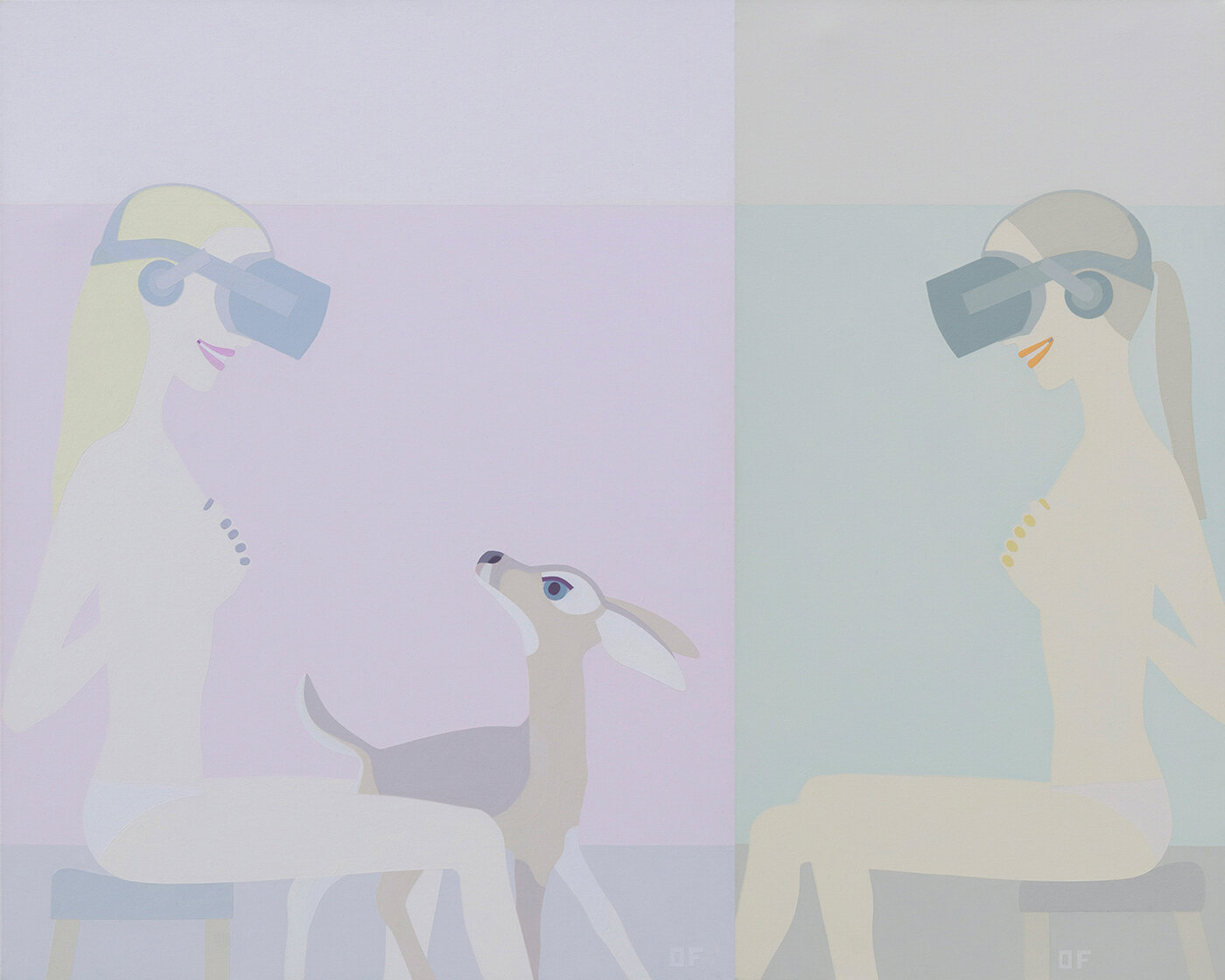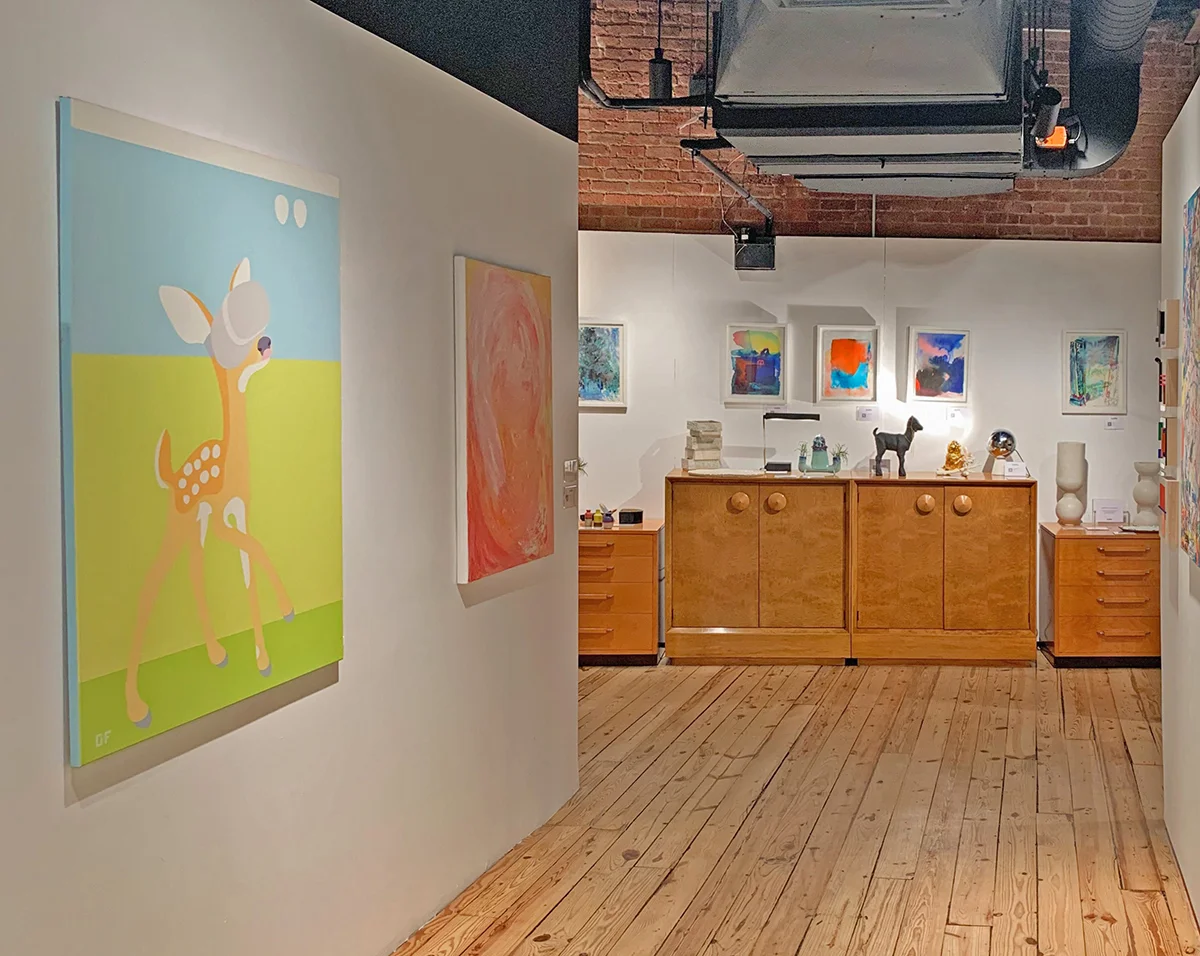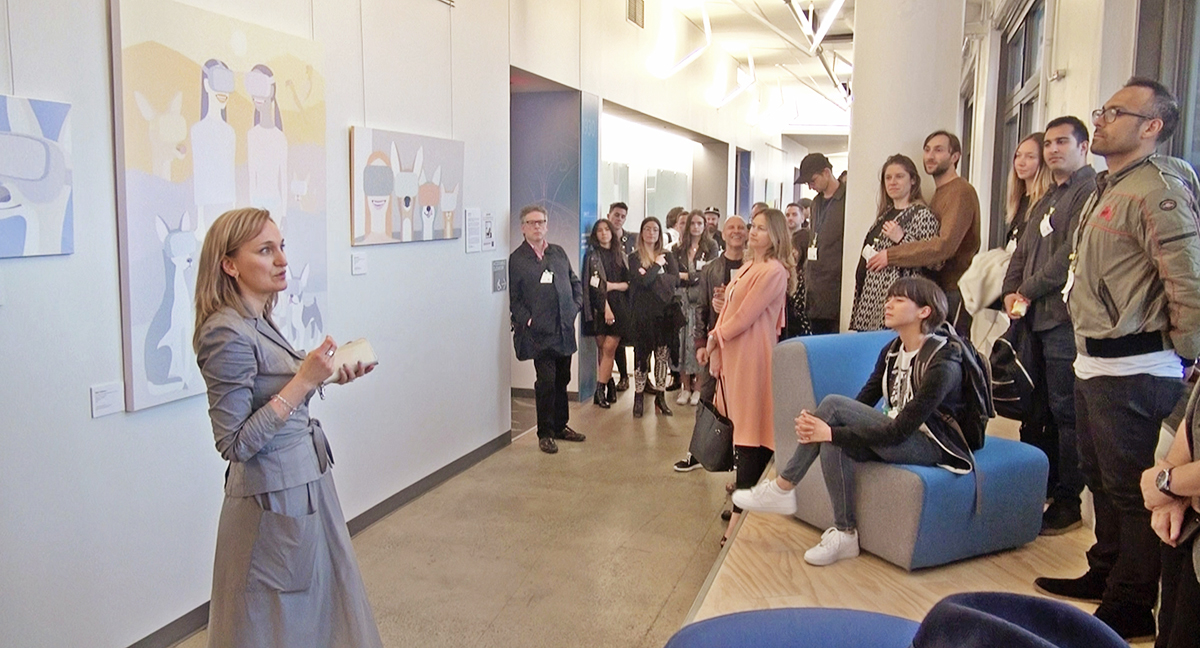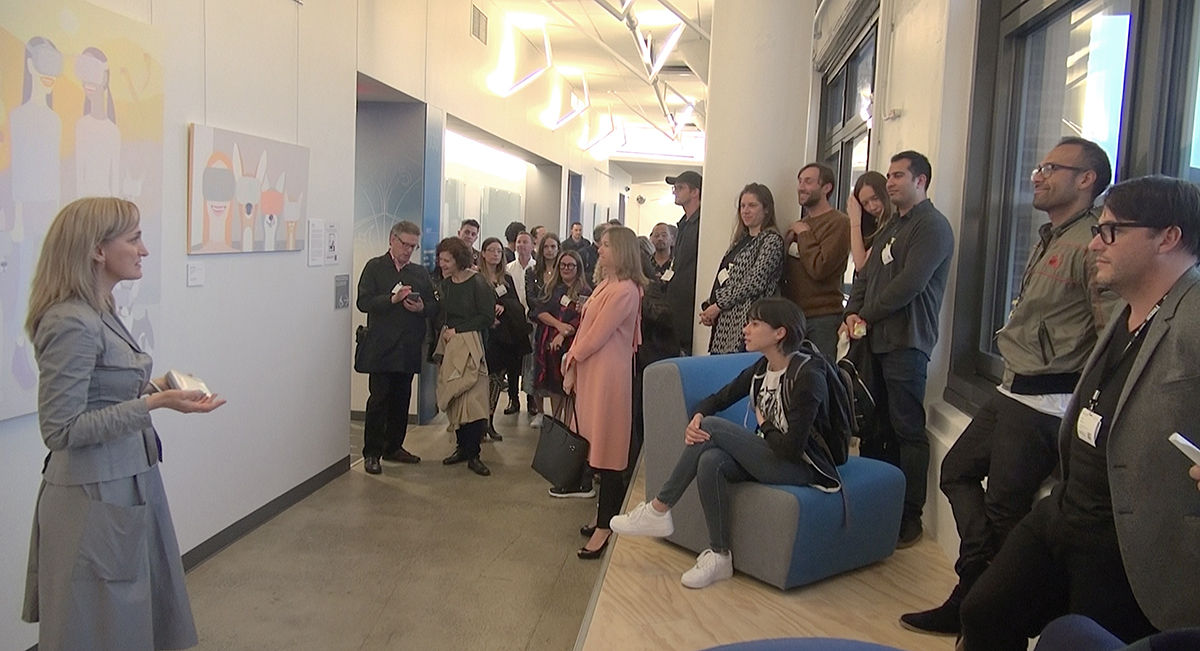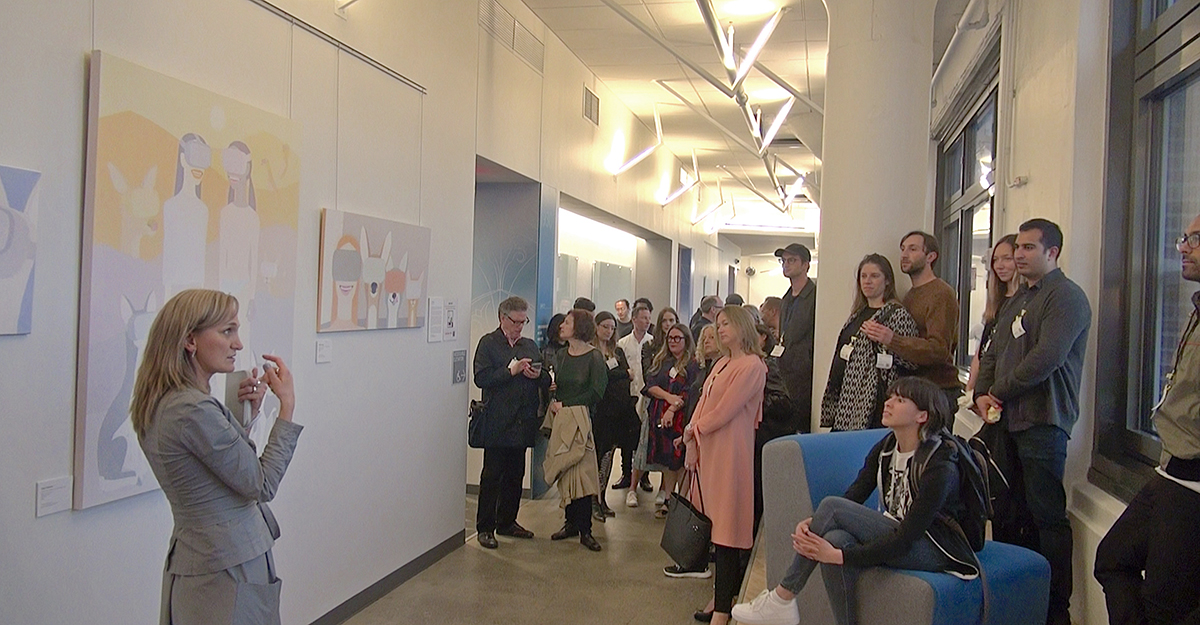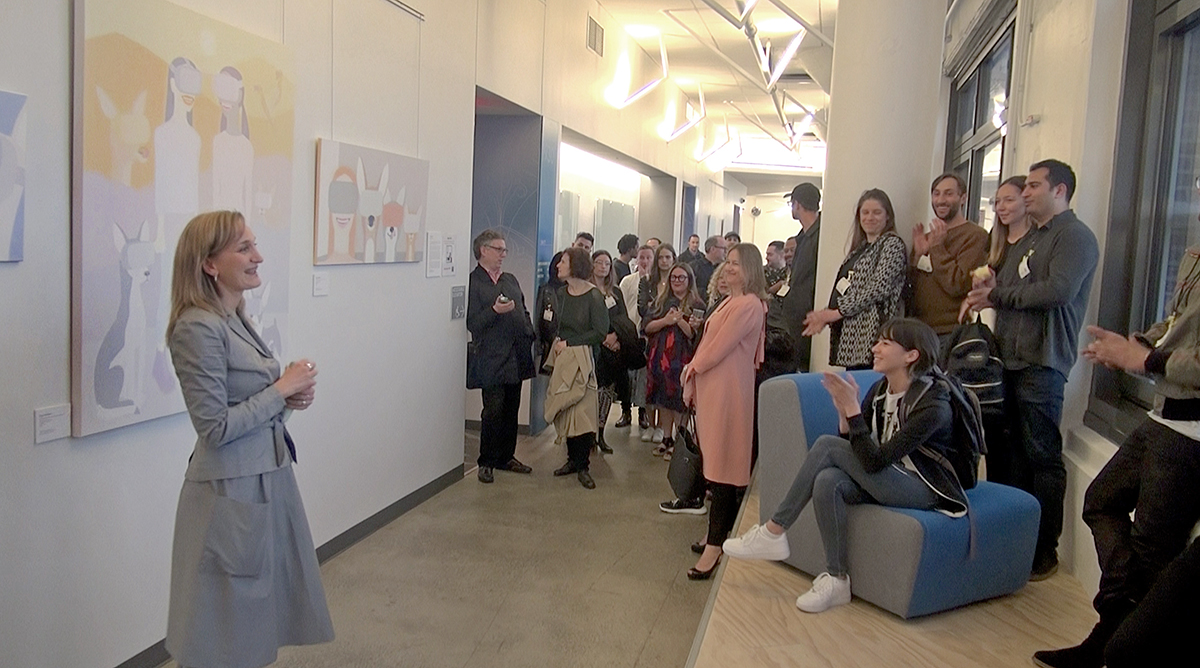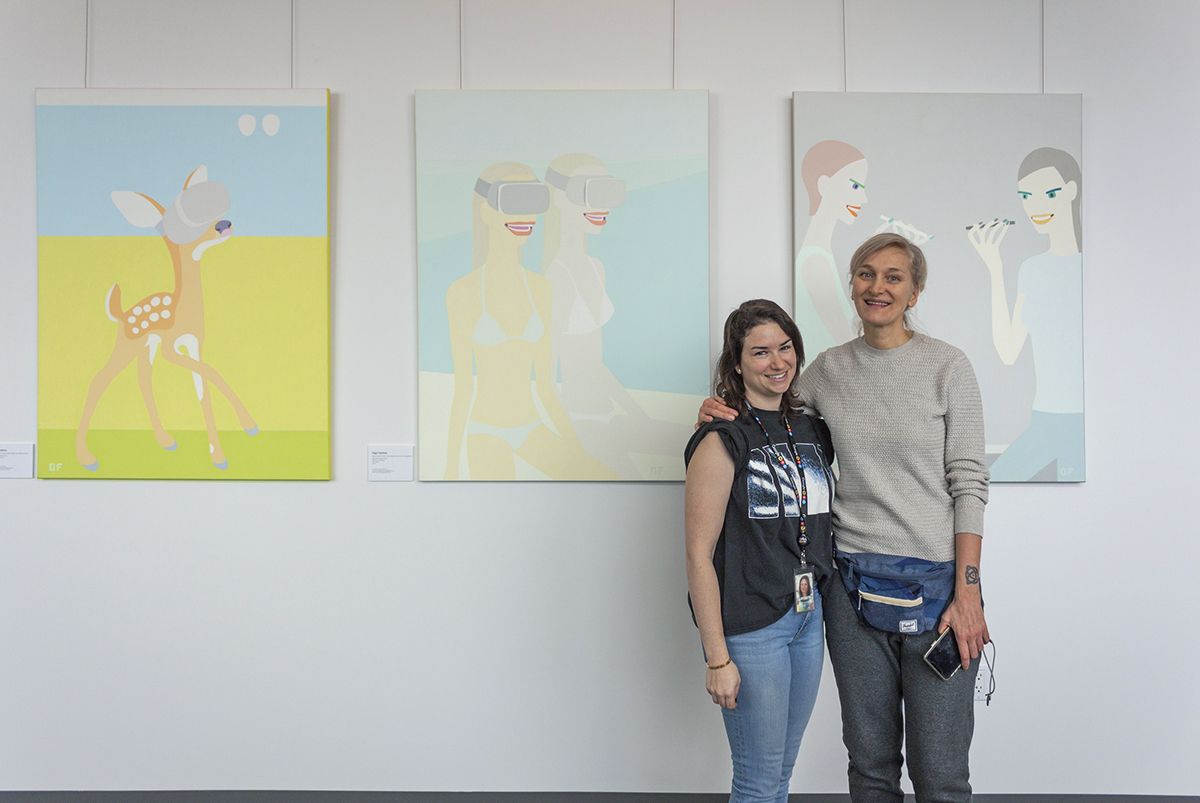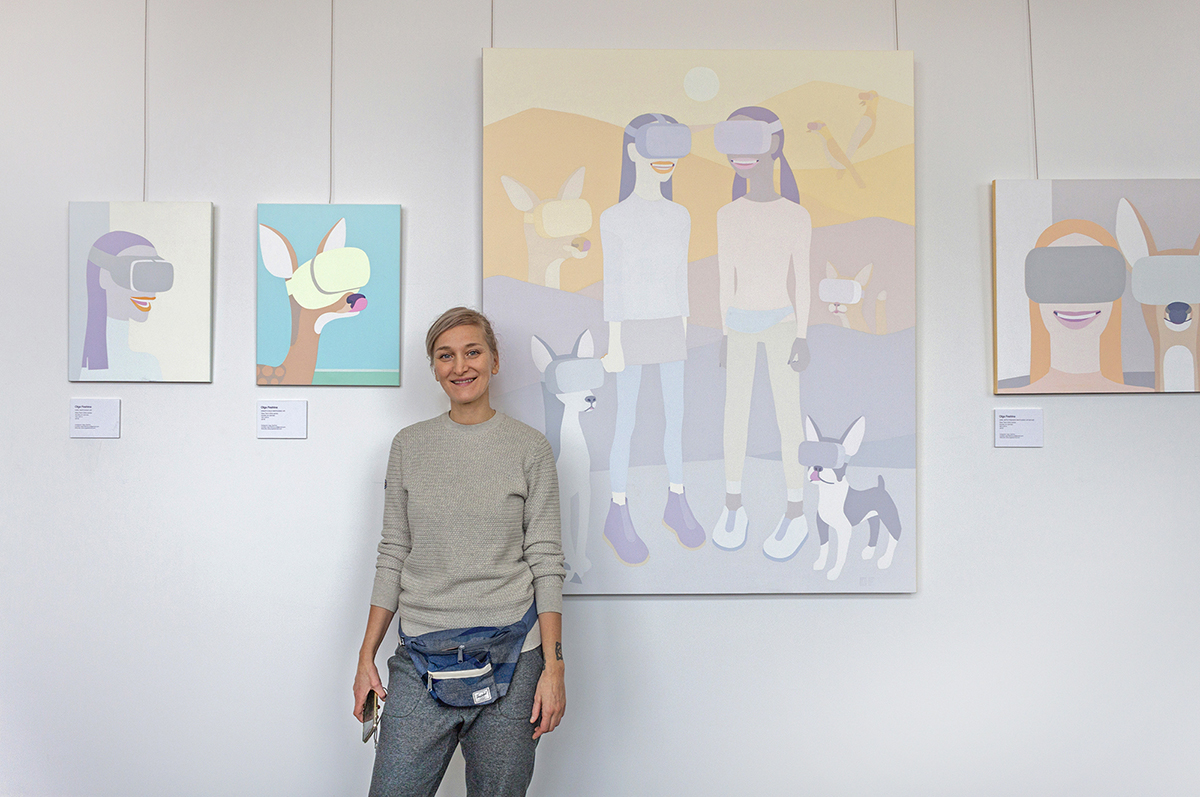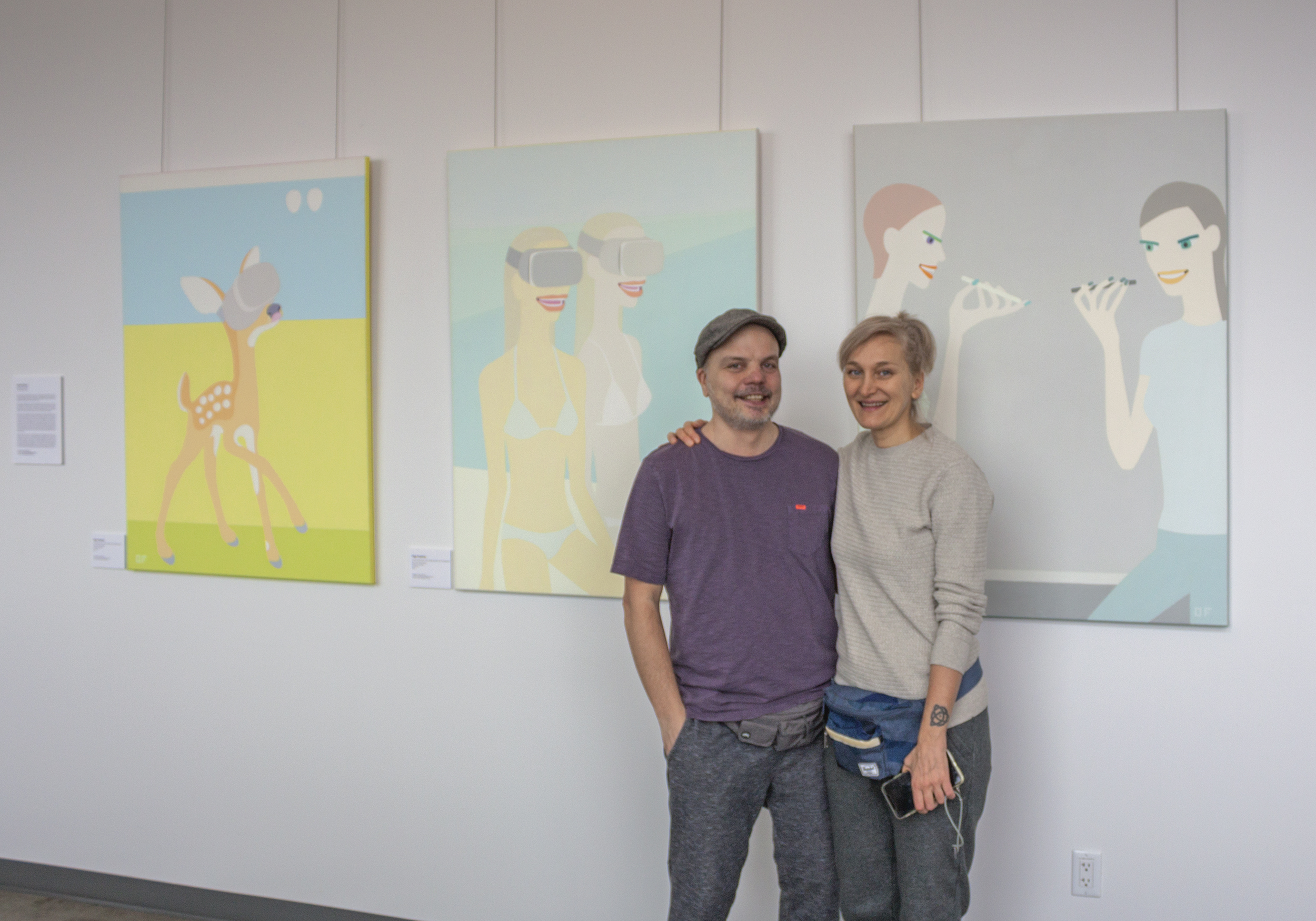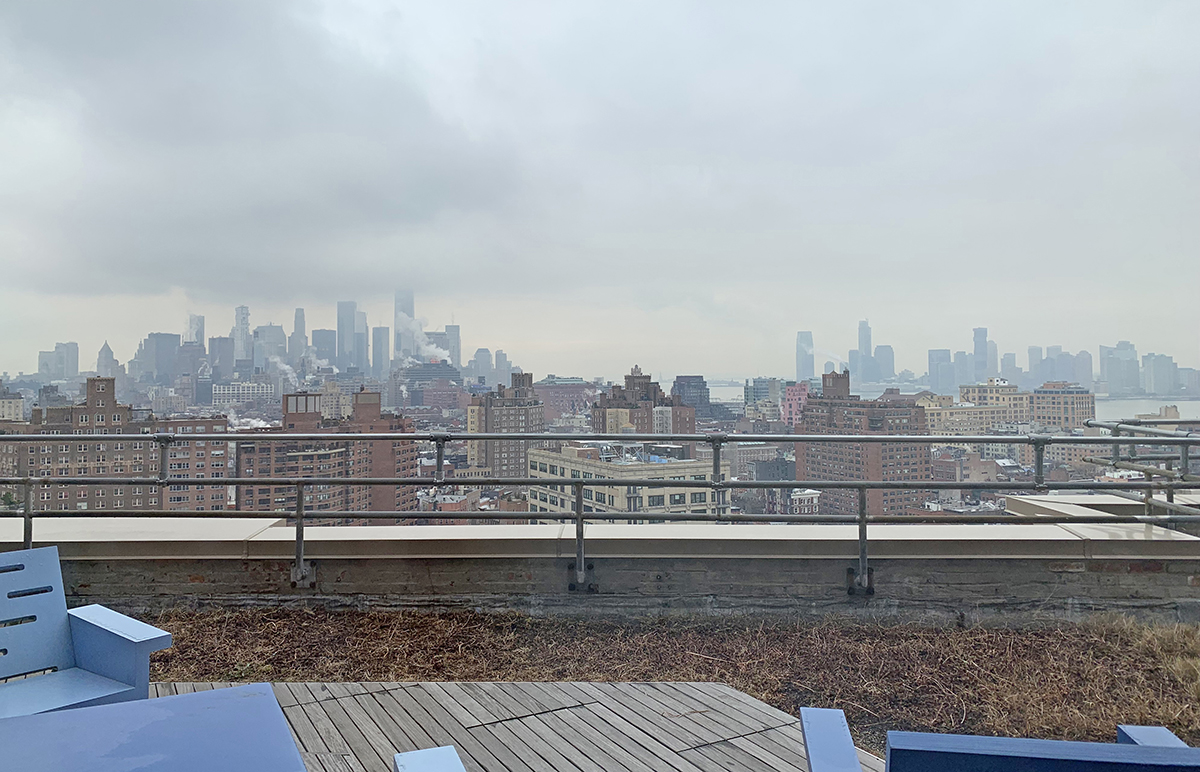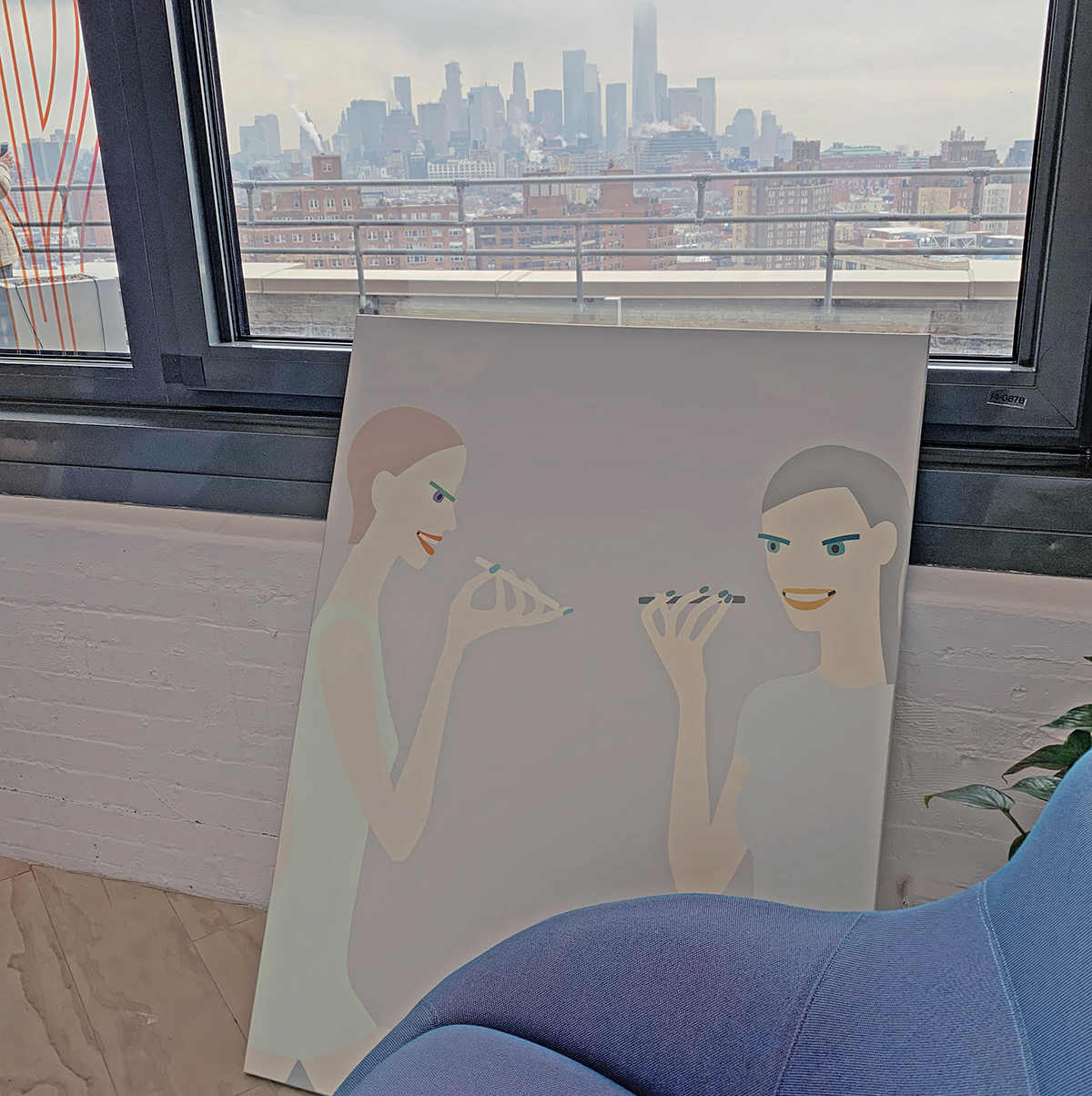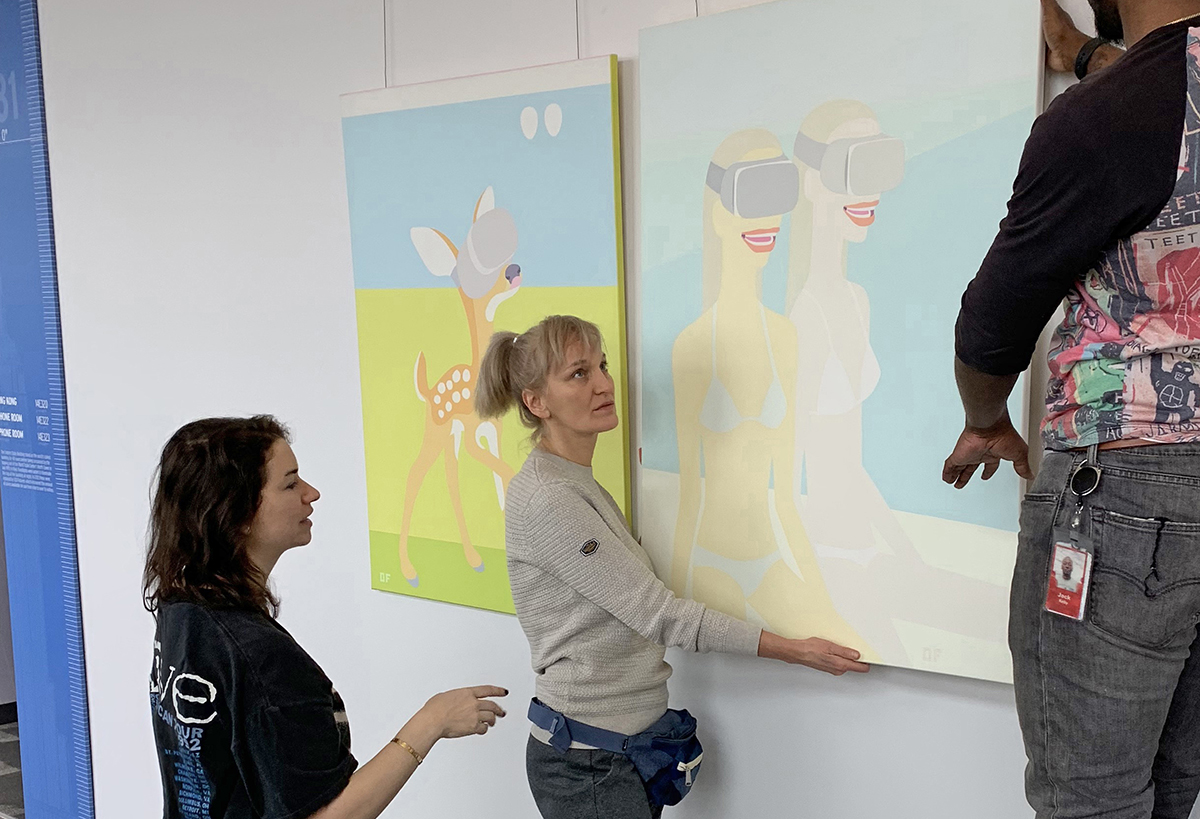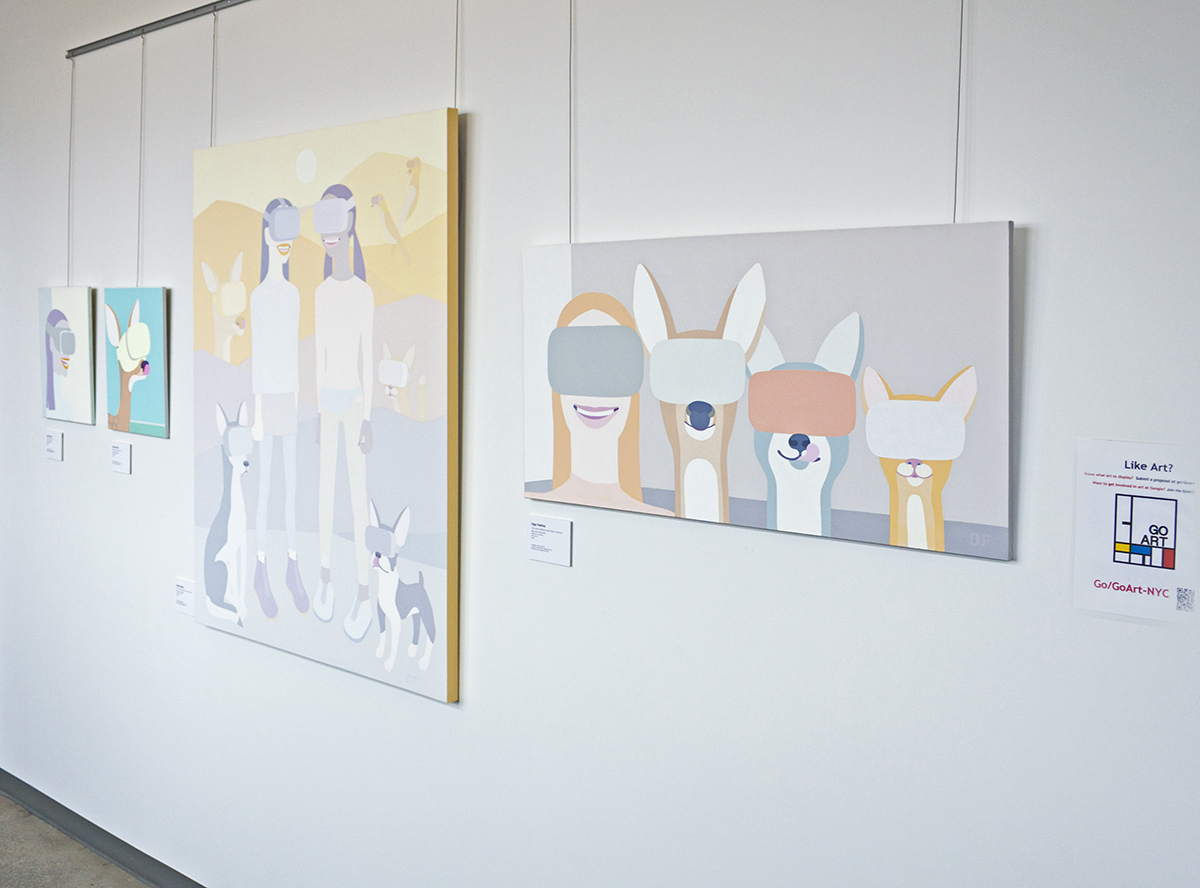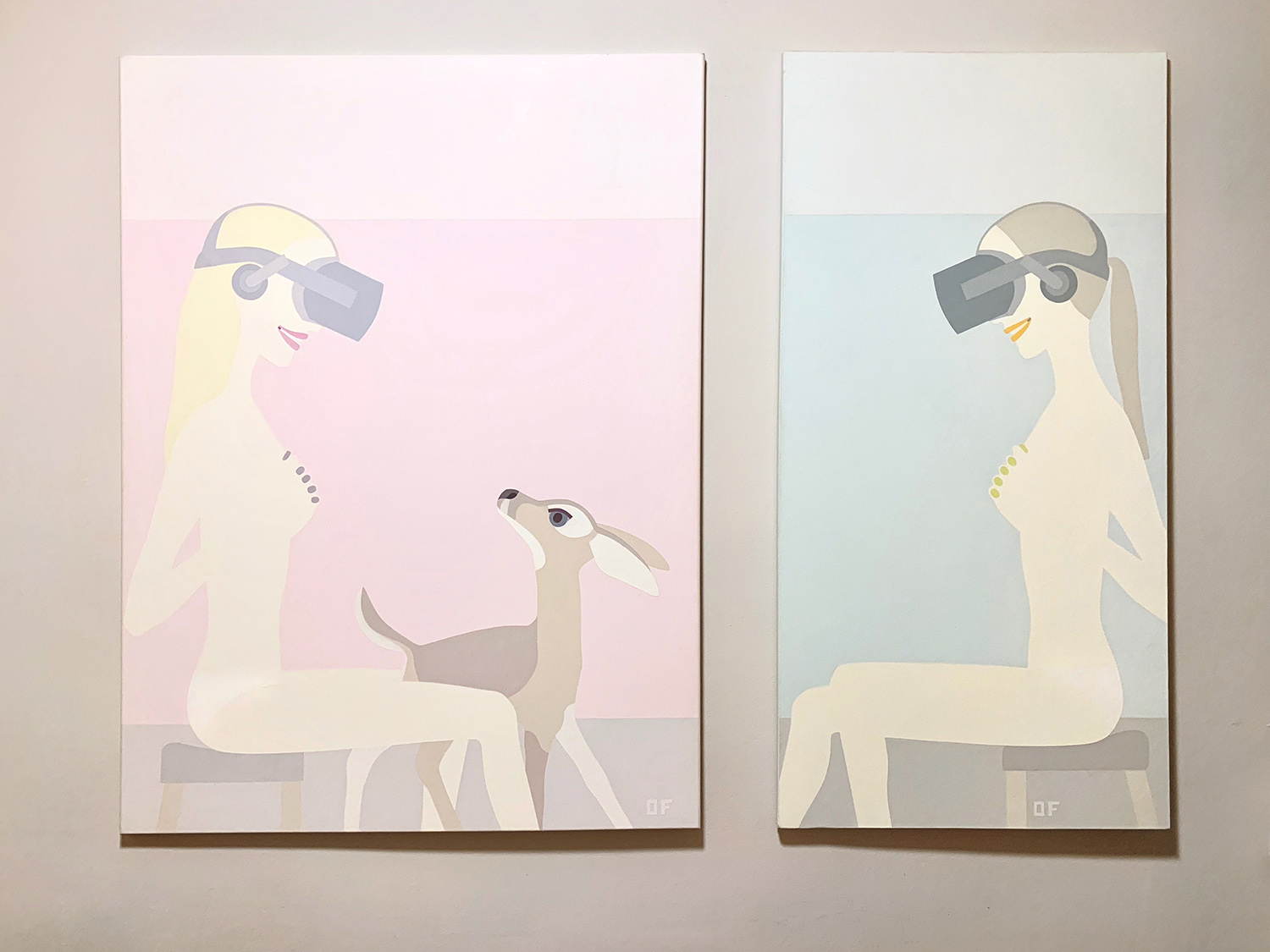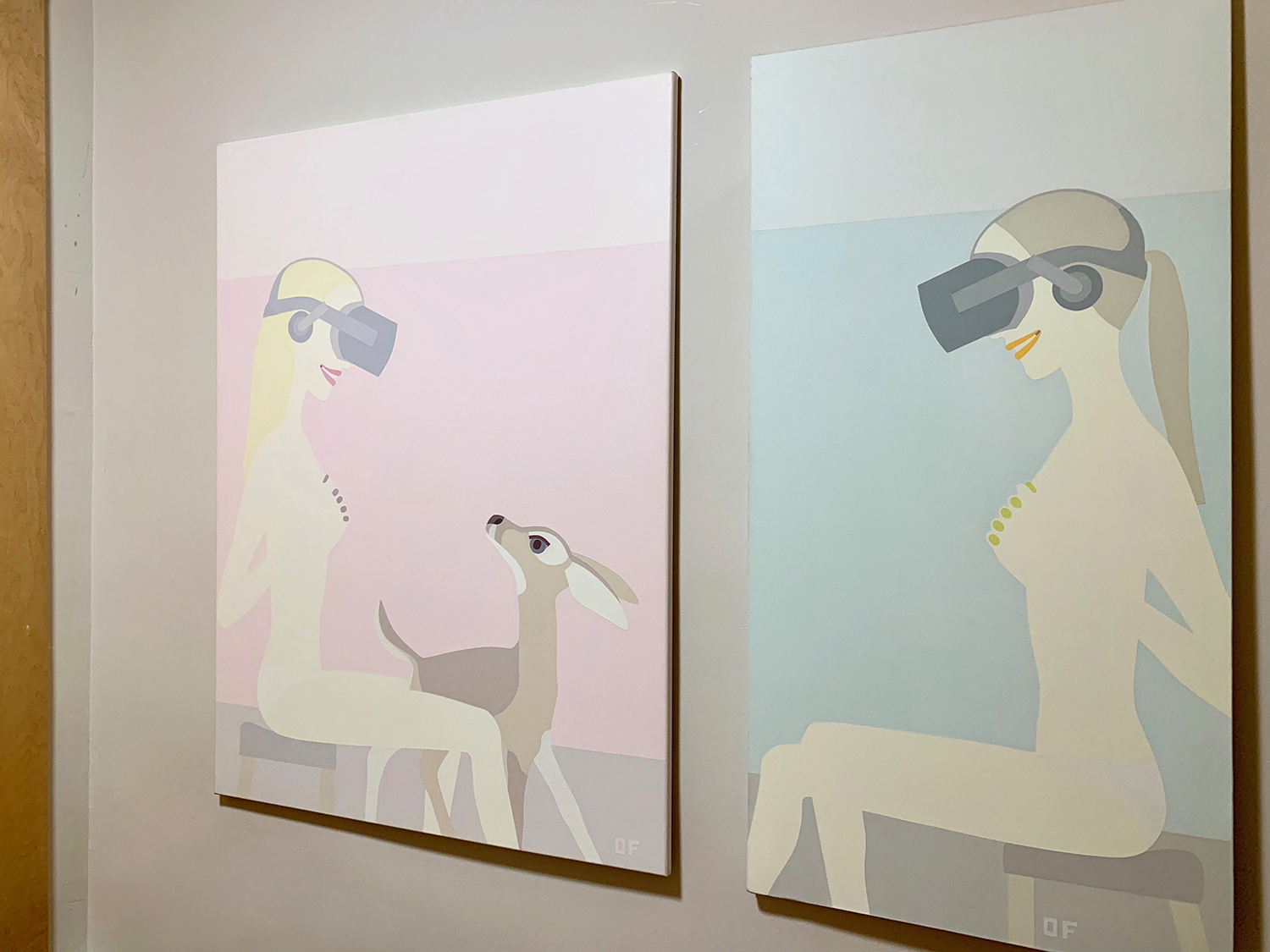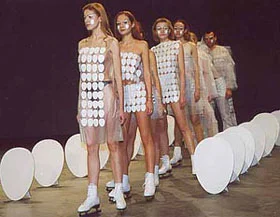Olga Feshina began the “New Tech Girls” series in 2016 and has continued elaborating on this body of work over the past few years. She is fascinated with how technological progress has had an adverse impact on the nature and psychological development of women today. Specifically, she offers a compelling critique of how the paradigms of contemporary feminine beauty are created, distributed, and absorbed across digital devices and platforms. The artist uses a soft, muted palette to render flat figures that have a smooth, matte surface and are situated within shallow pictorial spaces. Her work repeatedly calls attention to the idea of surface, which is appropriate as her imagery is focused on the complicated dichotomy between the virtual world and reality.
Across canvases like Girls Taking Selfie on the Beach (2016) and Girls Taking Selfie in the Fitting Room (2016), Feshina positions highly idealized young women mimicking poses they’ve seen via social media; their actions in turn continue to perpetuate these postures in a never-ending cycle of vapid mimicry. The artist mines numerous media outlets in order to become familiar with the most common gestures, poses, and stances in circulation. What is more, her characters are often in synchronized postures, underscoring the loss of individual expression and identity due to the nearly ubiquitous forces of conformity that operate underneath the surface of every image on social media. Interestingly, in Girls Taking Selfie on the Beach, one of the girls holds a selfie stick, framing the overall painting as the screen of an iPhone. In other works, such as Girls with Friends Walking in Park (2019) and Girls Watching the Same Movie on the Beach (2017), the young, slim figures are together physically, but removed or distanced psychologically because they’re engaged in entirely different virtual realms.
The artist has described her female figures as twenty-first century versions of the nymphs of antiquity. In Greek mythology, nymphs presided over certain natural locales, such as oceans, mountains, lakes, rivers, and forests. Feshina’s technologically inclined nymphs similarly inhabit outfoor environs, but are often completely disconnected from these physical surroundings, inhabiting a digital forest instead, one populated computer-coded creatures. The artist’s insertion of a doe in many of these works further expands this idea of a digital forest or enchanted grove. As Feshina has explained, animals figure rather prominently in fairy tales—folkloric or literary forms that have a lasting impact on children’s conception of self and others. Within her artistic practice, she understands this animal as representing each figure’s inner child: innocent, naive, impressionable, and needing protection. In the diptych Girls Exploring Their Feminine Nature (2017) and Inner Child Watching VR (2018), the doe is seen as being corrupted by exposure to technology.
Overall, these paintings are a social commentary on how technology has facilitated the rapid construction and dissemination of implied codes of behavior about how girls should look and act. Her work touches on concepts of beauty, image construction and distortion, identity, self-fashioning, and presentation.
In July 2019, collaboration NYA Gallery with Gallery 104 will present a new body of work by the artist: “New Tech Girls—Bikini Issue.” There will be an opening reception for the public on Wednesday, July 10th, 6-9pm. The show will be on view from July 4th until July 21st.
Tony Huffman, Independent Curator & Critic
ABOUT THE EXHIBITION NEW TECH GIRLS—BIKINI ISSUE
MORE ABOUT NEW TECH GIRLS SERIES
ARTIST FEATURE ON NEWYORKART.COM

